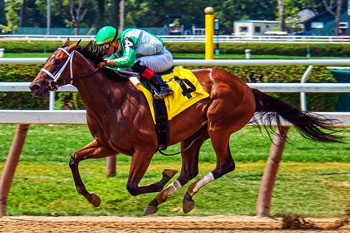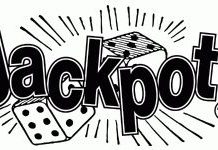Table of Contents

The community nicknamed him “Mr. Huge,” not only due to his huge winnings and Alan Woods’ net worth of AU$670 million, but for being an important innovator as well. Namely, he was responsible for the creation of betting syndicates, as well as the promotion of a totally new approach to horse race betting — via a computer.
The famous gambler, who usually played solo, also created teams. It all started when he was playing Blackjack during his horse racing days; from betting in his native Australia to Las Vegas, and even on Hong Kong horse races at their Jockey Club. He was an itinerant all-rounder who made history.
Childhood
Alan Woods was born in a small coastal town of Murwillumbah, New South Wales, Australia, in 1945. He was raised in a wealthy family. At a very tender age, before even going to kindergarten, he was already able to count to hundred. He learned to play chess rather quickly, and in his teenage years, he was introduced to the card game Solo Whist by his father. His parents were successful entrepreneurs, so his numerical gifts had to have come from somewhere. Later on, seeing how he was familiar with Solo, he started playing a fairly similar game, bridge, on a regular basis.
University
After finishing high school, he enrolled at the University of New England, Armidale, to study mathematics. He did not go to classes as he was expected to, his grades were not high, so he got expelled in the final year and never got the opportunity to graduate. Nevertheless, the courses he took included ones for future actuaries; there, he confirmed his mathematical skills, and it provided a good basis for his future career — insurance.
A Gambler in Progress
During his studies, he began playing poker on machines but did not win much. After moving to Sydney, where there were no such slots available, he gave up on them altogether. So instead of poker, he answered the call of Blackjack.
In the early seventies, a fellow bridge player drew Alan Woods’ attention to the viability of card counting in Blackjack and even the potential financial gain from it. During that time, he was working at a firm for actuarial services, and he still had some doubts about the whole notion. However, when another friend put his analytical skills to the test and checked the house edge at a Blackjack table in a new casino in Tasmania, he confirmed that, in the long run, players did not stand a chance. Woods got intrigued and spent a whole weekend in a casino, ultimately doubling his bankroll of $500. While he stayed in Hobart (Tasmania) for four months, in 1979, he won $16,000 by playing Blackjack in this fashion.
At that time, Alan Woods, the future top gambler, was on track of becoming an actuary. In one of the most tedious career paths in the financial sphere, even by today’s standards, Woods passed 70% of the requirements but felt unmotivated to continue. In the end, his marriage crumbled, his wife left him with their two children, he lost his job, and he fell to an all-time low.
It was only then that he turned to another memory from his youth: horse racing. When he was in college, a friend took him to a top-class race. There were two top horses; Woods bet on the third, and that runner won the race, breaking his personal record. By his own words, Woods became semi-addicted to horse racing in that period. But he did not go anywhere near race tracks for almost two decades; the only record of it was in 2003, just 5 years before he died. His primary interest was always in mathematical processes and results.
Hence, he felt motivated to employ his skills in creating a computer program for calculating the probability for betting while including all sorts of factors. The odder the factors, the bigger the winnings (usually in the millions); if the calculations were precise, that is. Final Alan Woods’ net worth was an estimated AU$670 million; not too bad for a college dropout.
Betting Syndicates
 Gamblers like Alan Woods are usually people enclosed in their own world, preferring solitary life over anything else. With them, keeping a low profile is usually the result of being banned from casinos in their early card-counting days. Almost every brilliant mind is success-driven, and with high bettors, it’s no different. They soon realized that forming teams leads to favorable results. This is why, in a way, betting syndicates actually resemble hedge funds. In order to win big, the members need to not only beat the bookies but also the other bettors as well. In the case of Alan Woods’ gambler syndicate, they stepped it up quite a bit. They searched for a margin where the interests and the behavior of both bookies and other bettors crossed, and then they tried to avoid them altogether. This method is known for “counting on the handicap,” but it is so much more. It is how they manipulated the given data the handicap is built on, or, as Alan Woods gambler team called it — an overlay.
Gamblers like Alan Woods are usually people enclosed in their own world, preferring solitary life over anything else. With them, keeping a low profile is usually the result of being banned from casinos in their early card-counting days. Almost every brilliant mind is success-driven, and with high bettors, it’s no different. They soon realized that forming teams leads to favorable results. This is why, in a way, betting syndicates actually resemble hedge funds. In order to win big, the members need to not only beat the bookies but also the other bettors as well. In the case of Alan Woods’ gambler syndicate, they stepped it up quite a bit. They searched for a margin where the interests and the behavior of both bookies and other bettors crossed, and then they tried to avoid them altogether. This method is known for “counting on the handicap,” but it is so much more. It is how they manipulated the given data the handicap is built on, or, as Alan Woods gambler team called it — an overlay.
An overlay would be a favorable bet where the offered odds were longer than those calculated by the software. If a horse is loved by the public, it creates a greater sense of expectation, as we want it to win. It puts the runner in a sort of a bubble, and what it actually produces is a margin that raises the odds of other horses to win. Plus, betting on horses in Hong Kong takes substantial input from superstitions and the more knowledgeable gamblers profit by that, quite literally.
In short, Woods and his team (Libertarian Investment Limited), that spanned across six countries, was active in the following:
- Extensive data collecting
- Data analysis
- Running data through a computer-generated formula (also with a touch of genius, and with the cooperation of Bill Benters, back in the mid-eighties)
- Adjusting the system by including the characteristics of the race track itself or the market price of that particular horse
The amount to wager was determined by the so-called Kelly’s criterion (meaning, if a horse has a 20% chance of winning, a wager equal to 20% of the bankroll will be required).
At one point during the two decades he spent on Hong Kong racing, Woods focused on a Triple Trio with a bankroll of $26 million. Woods’s team had analyzed 1.77 million possible combinations and reached nearly 15% of them, with a $13 million bet on the race.
A Shadow of the Stock Market Trade
Alan Woods famously deemed horse racing as “nothing more than a mathematical equation to be solved.” It was almost as if he was enjoying the rush of a broker’s job, but did not like the obligation or the pressure of the standard day-to-day employment.
- He made his first million through short selling in the Hong Kong stock market in 1987.
- Then he lost it all in the Japanese stock market in 1988.
- In his mid-thirties, Woods spent six months in Vegas so that he could play Blackjack nonstop. By the end of his time in the United States, he had won over $100,000.
- The first successful season of horse racing betting in Hong Kong was in 1986–1987, winning a total of $100,000.
- He won 8 million dollars in 1994 while betting on World Cup soccer matches.
In 2006–2007 alone, Alan Woods was said to have wagered around $64 million dollars on various horse racing events. And in the late 90s, he lost $100 million in an attempt to short sell the NASDAQ stock market index prematurely, just before the dot.com bubble burst.
Conclusion
Walking a thin line between advantage gambling and cheating, the gambler Alan Woods also showed his goodwill in his many humanitarian efforts. Whether he was trying to redeem his strange passion or it was something else, Woods donated hundreds of thousands of dollars to the Philippines aid fund, as well as for mental depression research.
Everyone needs to be passionate about what they do in order to be successful. Gamblers are people who share their mutual passion for beating the odds. A keen eye and a good sense of timing are what makes some of them greater than the majority. But only one of them will be remembered as Mr. Huge.







